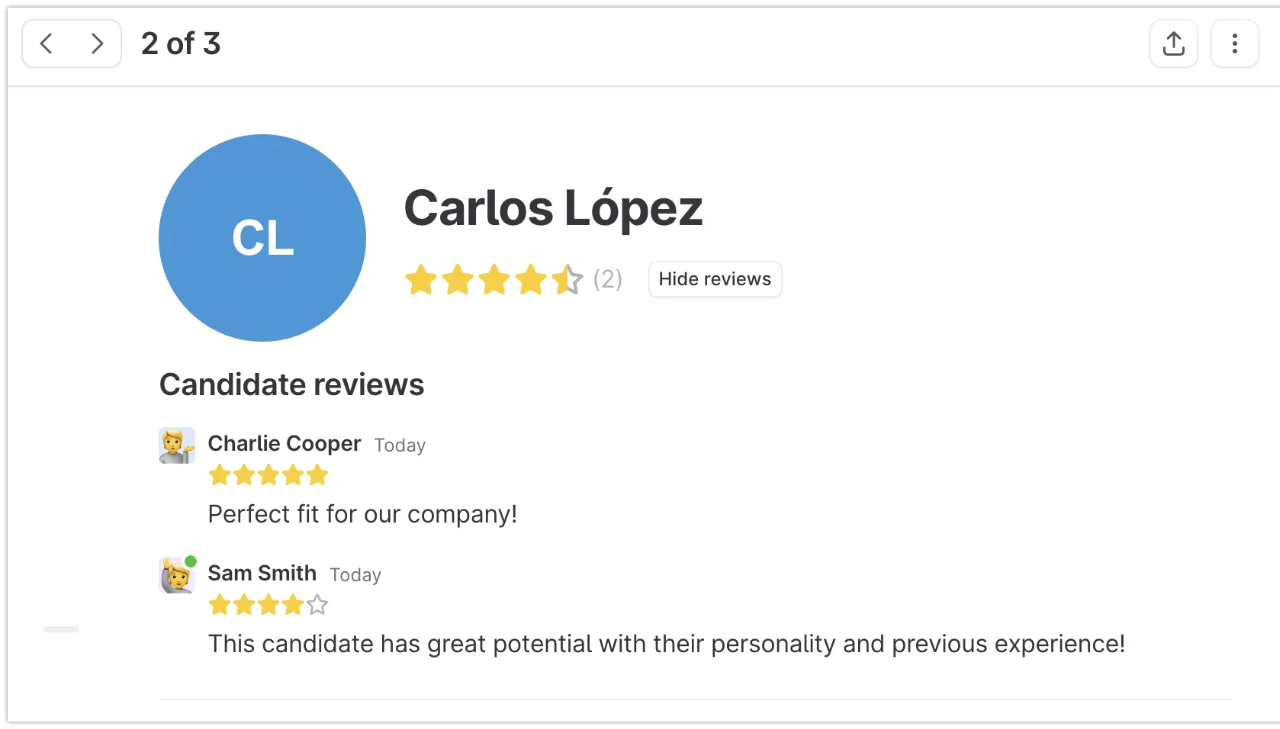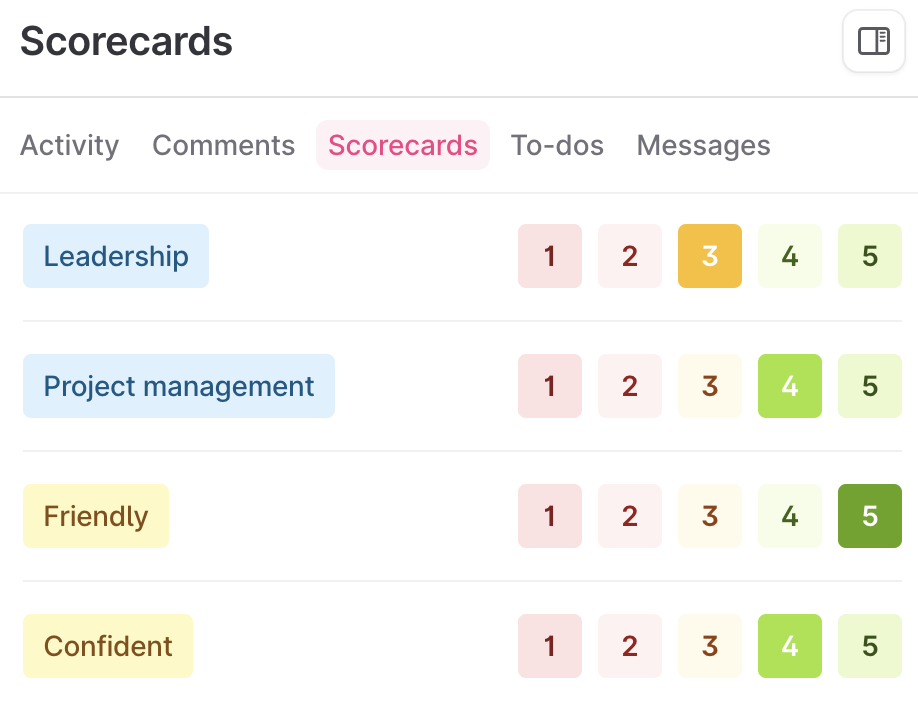
What is an ATS? How it really works and how it affects your Resume Score & Job Search
Ever clicked “submit” on a job application and wondered what happens next?
If you’ve heard scary stories about Applicant Tracking Systems (ATS) rejecting resumes or been confused by tips claiming to make your resume “ATS-proof,” you're not alone. There are a lot of myths out there that make you second-guess if your two-column resume or PDF is hurting your chances.
Here’s the truth: ATS isn’t a one-size-fits-all robot gatekeeper. It’s a toolbox, and different systems work in different ways. I know this firsthand, as I built and sold an ATS used by thousands of companies. There are three main types of ATS:
- Storage-Only: simple databases that stash resumes, track candidate status and allow for simple searches. Nothing too fancy.
- Rigid ATS (Old Tech): picky systems with outdated rules, tripping over creative layouts (recruiters love these quirks, though). They’re fading fast: too restrictive, leading to too many missed opportunities. And they are the source of most online ATS horror stories that lead job seekers to optimize for robots instead of humans (spoiler: not a great idea).
- Smart ATS (New Tech): sharp systems with slick parsing that handle creative formats just like a human would. They’re taking over because no one wants to lose great candidates.
Small companies might use simpler systems, while bigger players or companies with ambitious hiring goals go for the smarter options. So, let’s ditch the fearmongering and get to the facts.
In this article, you’ll learn:
- What is an ATS and how each ATS type handles your resume.
- The biggest ATS myths, debunked with facts.
- Smart strategies to craft a resume that works for both ATS and humans.
How different types of ATS handle your resume (and its score)
Hiring isn’t cheap. LinkedIn’s 2022 report estimates the average cost per hire at $4,700, with $705 allocated to job boards alone. That’s a significant investment, and companies can’t afford to let top talent slip through the cracks when they’re spending so much to attract candidates. That’s why companies rely on Applicant Tracking Systems (ATS): to help manage job applications, reduce time-to-hire, and increase the chances of finding the perfect fit.
Most companies use an ATS, but the features vary depending on their budget and needs. From basic storage to razor-sharp analytics, these systems differ widely. Here’s how the features that affect you compare across the three main types:
| Feature Name | Basic ATS | Rigid ATS | Smart ATS |
|---|---|---|---|
| Resume Storage | Your resume is stored as a file, safe and sound. Recruiters see the full version you sent. | Your resume is stored as a file, never lost. Same deal: recruiters can still access the original, even if parsing flops ⬇️ |
You resume is also stored as a file, always accessible. |
| Parsing and Profiling | No parsing. Recruiters must manually extract details from your resume, and create your candidate profile by hand. Two-column, one-column, Word, PDF… All just files. | Builds your candidate profile automatically but often misses key details due to rigid parsing. These systems only work well with very simple layouts, which is why outdated ATS resume tips focus on them. However, more companies are moving away from these systems because they are missing good talent (and money). This paper shows parsing accuracy hits: * 95% for one-column. * 85% for two-column. Honestly, not nearly as dramatic as the hype suggests. |
Advanced parsing understand context (e.g., “led projects” = “project management”), creating a more complete profile and increasing your chances of being seen. This means less stress about format: two-column layouts work perfectly. This research article reports a 96.2% parsing accuracy for any format with natural language processing (NLP), allowing ATS to read context like a human. More conservative studies estimate parsing accuracy at: * 95% for one-column resumes. * 90% for two-column resumes. |
| Search and Filter | Basic searches (e.g. by date or application status). Your resume always appears in the search (maybe in a different order). | Searches by exact keywords (if “Python” isn’t extracted from your resume, you won’t appear in the “Python” search). However, 63% of recruiters still check original resumes and update profiles manually in case parsing failed. |
Uses advanced search that recognizes synonyms and context, increasing your chances of appearing in keyword searches. |
| Killer Questions | They rarely offer this feature. | Pre-screening questions during application submission can disqualify you. Example: “Do you have a driver’s license?” for a delivery job. If you say “no”, you’re out. It’s not your resume’s fault. |
Same deal, don’t blame your resume. |
| Scorecards | Recruiters manually score resumes against job requirements. |
May generate automatic resume scores based on exact keyword matches, but accuracy is hit-or-miss, so recruiters often adjust scores manually. |
Combines manual and automated scoring with more accurate ranking and weighting of job requirements. |
How does an ATS look like? See for yourself
Wondering what an ATS actually looks like behind the scenes? Here are real screenshots from Teamtailor, a widely used Smart ATS. These images, sourced from their help center, show how you exactly what recruiters see and how your resume fits into the mix.
Candidate Profile
This is where your resume gets transformed into a structured profile, either automatically or manually. Notice how creative formats are not an issue! A 2024 LinkedIn poll found that 72% of recruiters appreciate a creative touch, so don’t let your resume be the dull one in the bunch.

This is a real look at how your details come to life: interview feedback, skills scorecard, your resume… All making you more than just a name on a list.

Search & Filtering
Here’s where recruiters dig through their candidate database: searching keywords, filtering skills or sorting by date. A well-optimized resume improves your chances of showing up in searches, but as you’ve seen, it’s not as dramatic as some make it seem. Most of the time, there’s still a human ensuring your application isn’t lost.

Scoring & Ratings
Before interviews, candidates can receive ratings based on their resume or a screening call. More structured scorecards usually come into play during interviews, normally evaluating skills. A quick glance at your profile could earn you a starry boost (or not).


Job Tracking
This is where recruiters monitor hiring progress, move candidates through different stages and collaborate with hiring managers.

Busting ATS Myths: separating fact from fiction
There’s not just one type of ATS, there are many, each working differently. Yet, myths about them spread like wildfire, often spread by people more interested in grabbing attention than sharing real facts.
This doesn’t mean you shouldn’t optimize your resume for ATS. It just shows that a lot of the “expert” tips out there might be outdated or just plain wrong. And remember, the real person to impress is the recruiter, not just the software. If you're only focusing on the bots, you might be missing the bigger picture.
Let’s break down some myths that can hurt your job applications.
#1 Does ATS filtering kill your resume?
The idea that your resume gets lost completely if it doesn’t get through ATS filtering is exaggerated. No matter the ATS type, your resume is stored as a file and is still available to recruiters. Even if parsing fails or filtering doesn’t rank you highly, recruiters can still view the original document.
#2 Are two-column resumes ATS-friendly?
This myth comes from old advice concerning the “Rigid ATS”, which struggles with complex layouts. But modern Smart ATS handle two-column resumes just fine.
What the data says:
- Rigid ATS have 85% accuracy on two-column resumes (vs. 95% for one-column).
- Smart ATS achieve 90–96.2% parsing accuracy across any format.
#3 Do all ATS require exact keyword matches?
Exact keyword matching is a Rigid ATS quirk, not a universal rule.
- Basic ATS don’t search at all.
- Rigid ATS rely on exact keyword matches, but recruiters often step in to fix parsing oversights.
- Smart ATS recognize synonyms and context (e.g., “coding” = “programming”), making keyword stuffing less of a concern.
You’re not sunk without the perfect word.
#4 Does resume format matter more than content?
ATS are starting to value content and relevance more than strict formatting, but format still matters to recruiters. They usually spend about 6 to 10 seconds scanning a resume before deciding if they want to dive deeper. A well-structured resume helps key info pop out, boosting your chances of getting noticed.
#5 Do all ATS automatically score your resume?
The idea that every ATS just gives your resume a score is inaccurate. Scoring isn’t automatic across the board, and it depends on the system and stage of the process.
- Basic ATS don’t score anything, recruiters manually evaluate you.
- Rigid ATS might auto-generate a “resume score” (like a star rating or a “top match” tag) early in the process based on keyword matches, but it’s often shaky, and not all recruiters trust it.
- Smart ATS blend automation and manual input for more accurate rankings.
Plus, there’s a difference in scoring types: early-stage “resume scores” filter candidates, while detailed scorecards (often focused on skills) are typically filled out later, during interviews, to assess fit more deeply. Humans still hold the reins.
Wrapping-up
Don’t fall for the ATS fear-mongering. Instead, focus on crafting a resume that highlights your strengths, uses relevant keywords naturally, and remains clear and readable. ATS exist to assist, not to replace human judgment.
If you’re still reading, I want to thank you. Pass it along if it’s clicked!
Next step: turn what you’ve learned into a resume that gets you in the door!
Prioritize content and format that resonates with both systems and recruiters, and you’ll be ahead of the game.
We're two product builders who care about quality, taste and doing things right. We want you to get that job you want, plain and simple. That's why we are building CandyCV to help you create a great resume and land a job for free. If you give us a try (and feedback!), we'll be forever grateful 😊
Alba Hornero
Co-founder and Product Builder
As CandyCV’s co-founder and a former product lead in HR tech, I’ve built ATS tools, optimized hiring processes, and interviewed hundreds of recruiters. I personally write every post, no AI, no SEO freelancers; just real, high-impact job search advice that truly helps you land your next role.